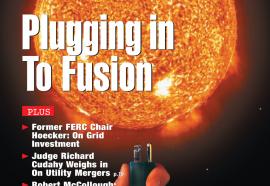Utilities and Regulators: A Search for Harmony
Ratemaking Special Report: Survey respondents weigh in with needed actions.
The utility regulatory process is prone to controversy, given the inherently adversarial roles and varied viewpoints among the utilities, regulators, and other stakeholders. Oft-heard pleas of "why can't you just see this issue my way" or "can't we all just get along" underscore the deep-seated frustrations of utility leaders and regulators in trying to find a common ground for addressing crucial issues surrounding the formulation of business strategies, establishment of responsible financial goals, and setting of operational performance standards for the regulated gas and electric distribution utility segments of the energy industry.








